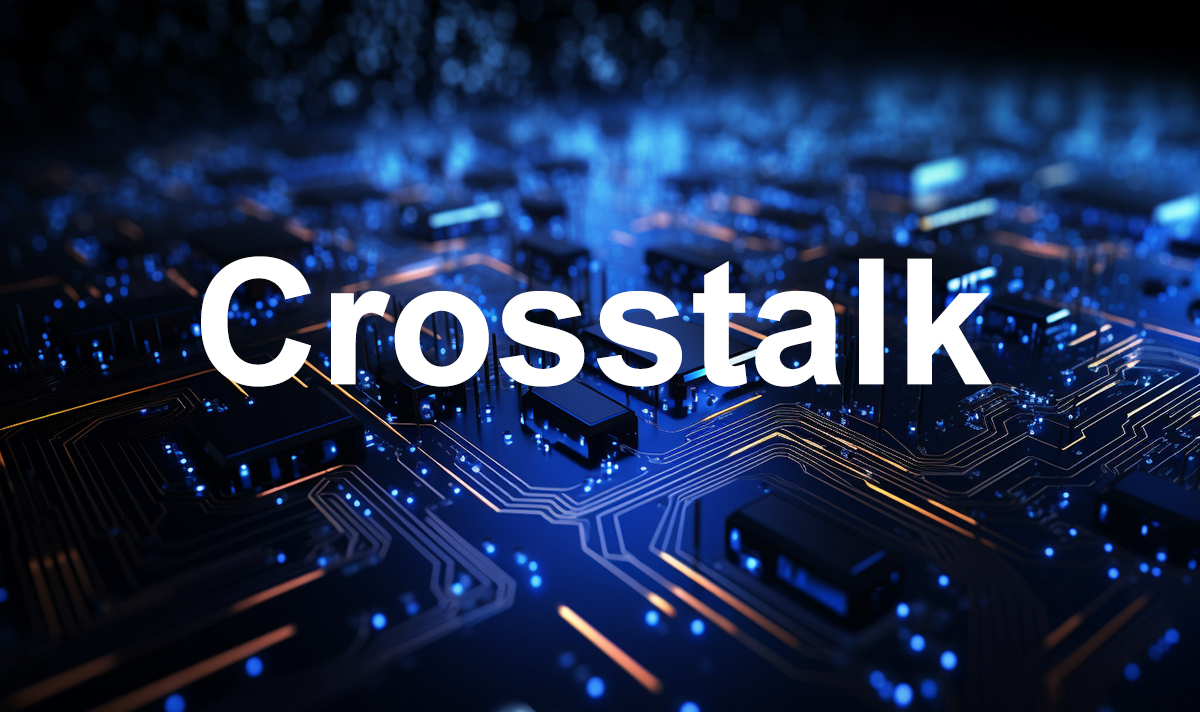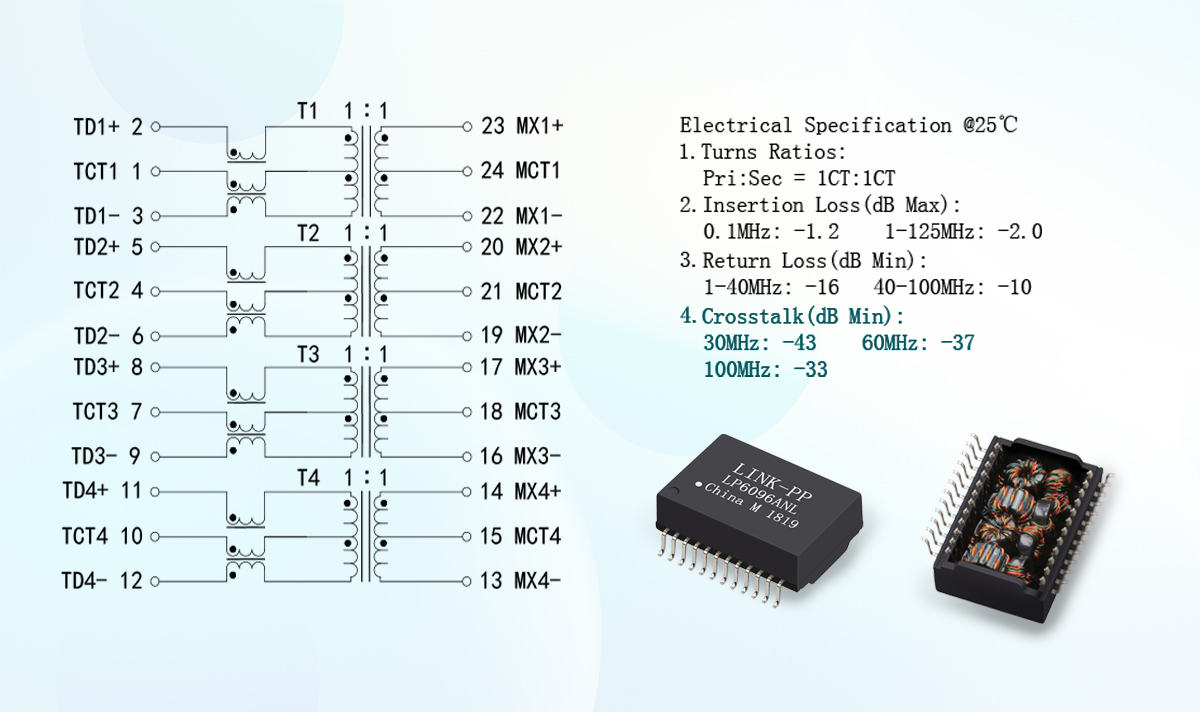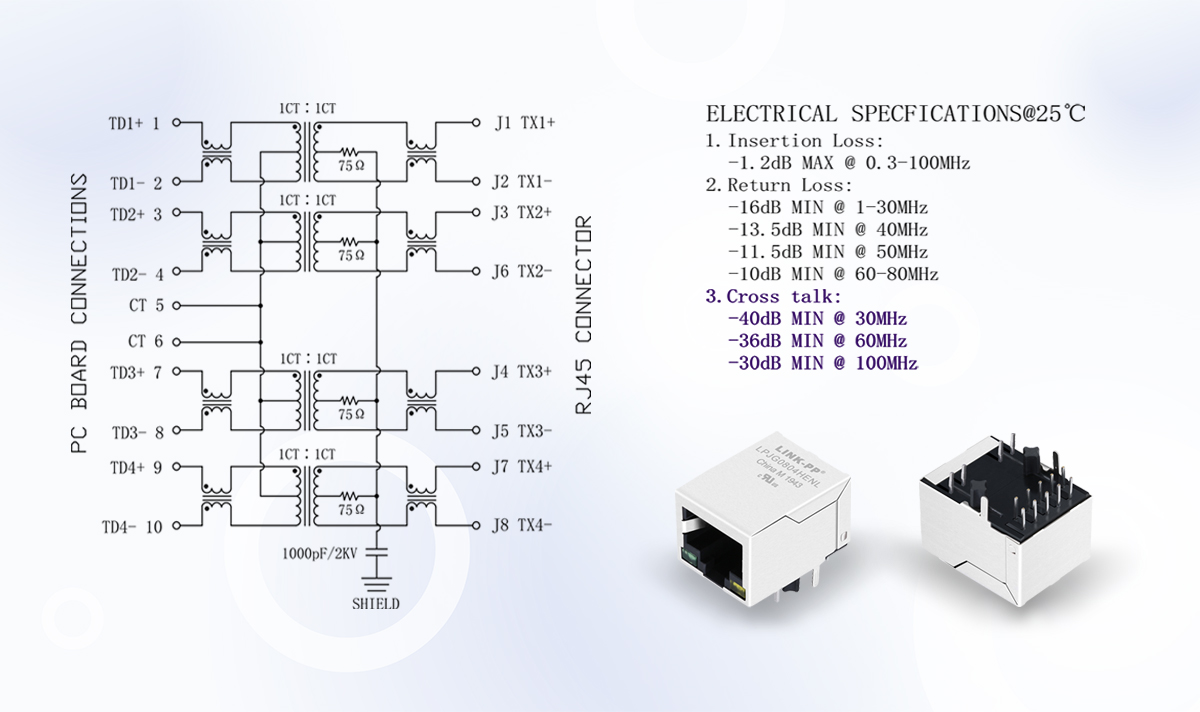Crosstalk is unwanted interference that occurs when the electric or magnetic fields from one signal channel disrupt adjacent channels—leading to data errors, speed reduction, and even compliance failures in modern network deployments. Specifically in network hardware, crosstalk arises from electromagnetic coupling between closely packed wires, PCB traces, or connectors, and is a critical concern in data centers, switches, servers, and all high-density infrastructure.

➤ What Is Crosstalk?
Crosstalk in Ethernet systems refers to unwanted electromagnetic interference between adjacent signal paths. It occurs when a signal transmitted on one pair of wires causes an undesired effect on another nearby pair, potentially degrading data quality.
This is a critical issue in high-speed Ethernet networks, especially when using unshielded twisted pair (UTP) cables or densely packed printed circuit boards (PCBs).
➤ Effects of Crosstalk on Ethernet Performance
Crosstalk directly impacts system reliability, particularly at high data rates (Gigabit and beyond). Key problems caused by excess crosstalk include:
Signal distortion and loss
Increased Bit Error Rate (BER)
Network instability or disconnects
Failure to comply with industry standards (e.g., IEEE 802.3, TIA-568)
Need for signal retransmission
The higher the transmission speed (e.g., Gigabit, 10GBASE-T), the more sensitive the system is to crosstalk. For enterprise and OEM/ODM buyers, controlling crosstalk isn’t just technical best practice—it’s essential for passing compliance tests, minimizing downtime, and safeguarding investments in network upgrades.
➤ Main Types of Crosstalk
Near-End Crosstalk (NEXT): Interference measured at the transmission (sending) end of a cable or connector. Critical as a quality metric for Ethernet cabling and components.
Far-End Crosstalk (FEXT): Interference observed at the far (receiving) end. Less severe than NEXT at lower speeds but becomes a concern at higher bandwidths.
Alien Crosstalk(AXT): Interference between adjacent cables, not just between wire pairs within a single cable; especially problematic in tightly packed racks and patch panels.
➤ How to Reduce Crosstalk in Ethernet Design
✅ 1. Twisted Pair Design
Twisting wire pairs reduces the loop area, minimizing electromagnetic coupling. Higher category cables (Cat6, Cat6a) have tighter and more consistent twists.
✅ 2. Shielding
STP (Shielded Twisted Pair) cables provide better protection than UTP.
Internal shielding in RJ45 connectors (like those made by LINK-PP) isolates each pair effectively.
✅ 3. Separation and Routing
Maintain physical distance between high-speed traces on a PCB.
Avoid running parallel traces for long distances.
✅ 4. Differential Signaling
Ethernet uses differential signals which cancel out common-mode noise, including crosstalk.
✅ 5. Use of Integrated Magnetics (MagJack)
LINK-PP’s RJ45 connectors with integrated magnetics are designed with built-in filters and transformer isolation, reducing both common-mode noise and crosstalk.
LINK-PP’s Solution to Crosstalk in Ethernet
LINK-PP’s RJ45 MagJack connectors and LAN transformers are engineered with:
Enhanced internal shielding and twist ratios
High-frequency, low-leakage transformer windings
Designs exceeding IEEE and TIA requirements for NEXT, FEXT, and alien crosstalk These deliver tangible benefits: greater reliability, faster deployment pass-rates, and reduced troubleshooting.
📌 1. LP6096ANL – 1G PoE+ LAN Transformer (SMT)

This single-port Gigabit Ethernet transformer is designed for 1000BASE-T and PoE+ applications. It uses high-isolation magnetic design and optimized winding to minimize crosstalk.
Crosstalk Performance (dB Min):
@30 MHz: –43 dB
@60 MHz: –37 dB
@100 MHz: –33 dB
🛠 Suitable for use in PoE switches, routers, and embedded networking devices.
📌 2. LPJG0804HENL – 1G RJ45 Connector with Integrated Magnetics

This compact 1x1 Tab Down RJ45 MagJack features built-in magnetics and LED indicators, offering reliable signal transmission and superior EMI shielding.
Crosstalk Performance (dB Min):
@30 MHz: –40 dB
@60 MHz: –36 dB
@100 MHz: –30 dB
🔧 Ideal for Ethernet switches, motherboards, IP phones, and networking equipment that require high signal integrity.
➤ Conclusion
As Ethernet networks scale in speed and density, crosstalk becomes a growing concern that must be addressed at both the cable and connector level. By choosing well-designed components such as LINK-PP’s MagJacks engineers can ensure reliable, high-performance data transmission even in demanding environments.


